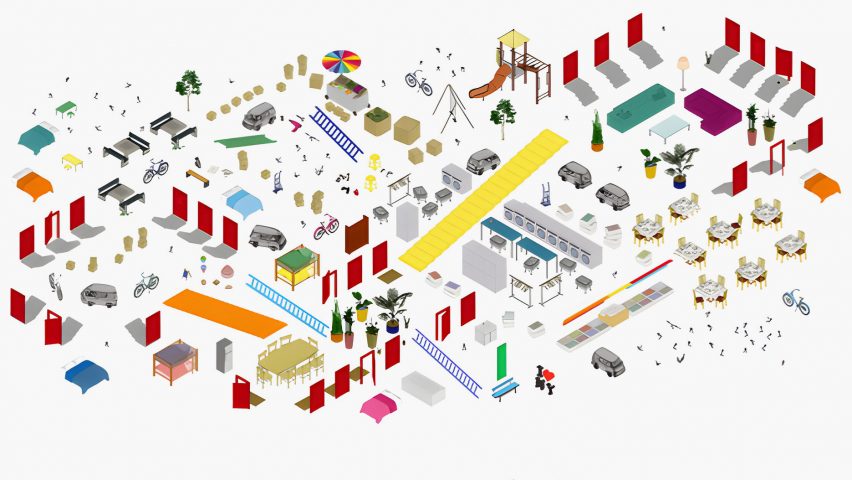
Ten architecture projects by students at City College of New York
Dezeen School Shows: a project examining the street furniture in Manhattan's Chinatown district is included in Dezeen's latest school show by students at City College of New York.
Also included is a project that explores the relationship between humans and rats in New York City as well as a scheme that sees the restoration and adaptive reuse of the National Opera House.
City College of New York
Institution: City College of New York
School: The Bernard and Anne Spitzer School of Architecture
Courses: Bachelor of Architecture, Master of Architecture and Master of Landscape Architecture programs, post-professional Master of Urban Planning (Urban Design) and Master of Science in Architecture programs, and (pre-professional) Bachelor of Arts in Urban Studies and the Built Environment program
Tutors: Jeremy Edmiston, Kaitlin Faherty, Jerome Haferd, Brad Horn, Neil Katz, Kaja Kühl, Fabian Llonch, Lane Rick, Yadiel Rivera-Díaz, Julio Salcedo, Sanjukta Sen, Martin Stigsgaard, Laura Wainer and Marcus Wilford
School statement:
"The Bernard and Anne Spitzer School of Architecture at the City College of New York is the flagship public school of architecture in New York City.
"The Spitzer School is committed to social and sustainable concerns in design and practice, as well as providing access to the finest education in the art, history and technology of architecture, landscape architecture, and urban design to the broadest and most diverse student population.
"Spitzer continually evolves to include more of the culture and history of our student body – this diversity refocuses and tests tradition, emboldening new directions in design education and the design fields."
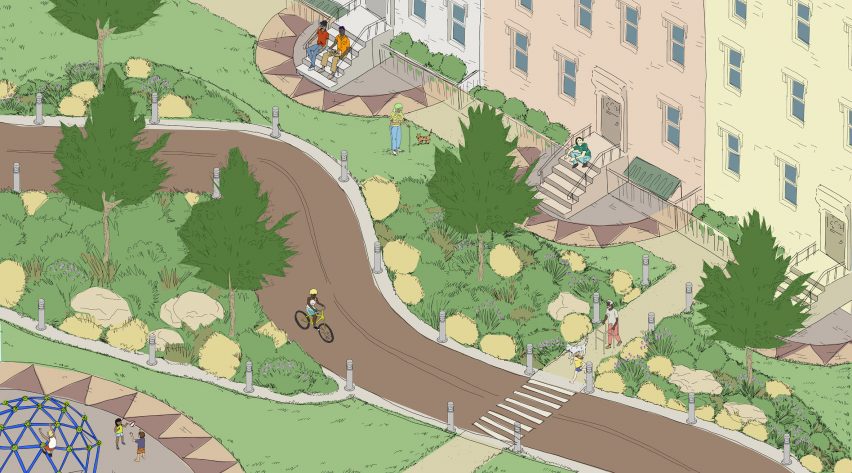
Harlem Daisy Chain by George McCracken and Nada Gatalo
"This project contributes to a larger proposal to reconfigure and connect Upper Manhattan’s green spaces, from the northern edge of Central Park on 110th Street to Coogan's Bluff on 155th Street – we call this new continuous park the Harlem Daisy Chain.
"The proposal re-envisions the block of 111th Street – between Frederick Douglass Boulevard and Manhattan Avenue – as a park corridor connecting Central Park with Morningside Park.
"The plan repeats the quilt motif designed by artist Algernon Miller for Frederick Douglass Circle's paving, which demarcates scattered nodes of recreational activity.
"The project proposes eliminating traffic and replacing intensive paving with intensive planting."
Students: George McCracken and Nada Gatalo
Course: Master of Landscape Architecture – first-year foundation studio
Tutors: Sanjukta Sen and Yadiel Rivera-Díaz
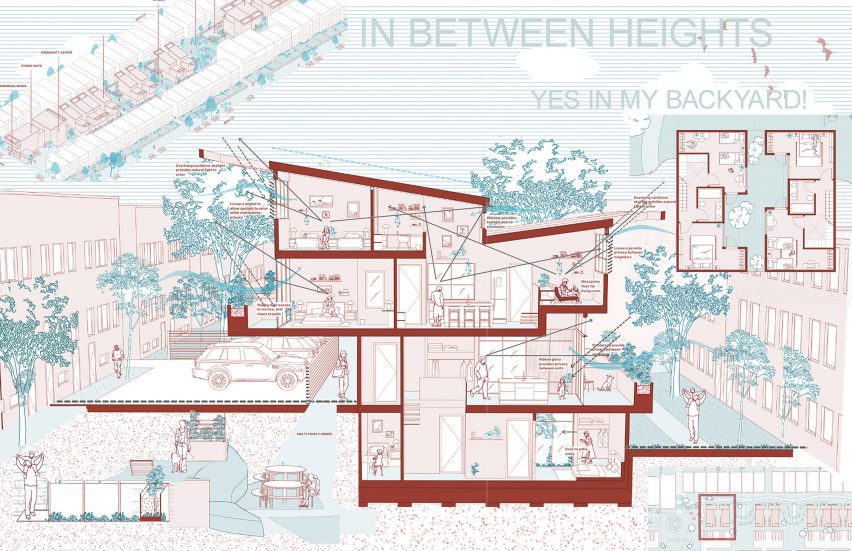
In Between Heights: A 'Yes in my Backyard!' Project by Valeska Abarca, Ismael Cajamarca and Annabelle Surya
"Drawing on a study of informal construction hidden within the dense urban blocks of the Jackson Heights neighbourhood in Queens, New York, this project proposes a gradual densification plan.
"The proposal creates a step-by-step strategy to convert private parking lots into compact, affordable housing units and community spaces. The project is grounded in the concept of incrementality maintained by a community land trust.
"This approach accounts for the social and cultural values of existing communities and the changes in urban landscapes over time. It is a small-scale development model that can be repeated, enabling residents to engage in the city-making process."
Students: Valeska Abarca, Ismael Cajamarca and Annabelle Surya
Course: Bachelor of Architecture Advanced Studio – Incremental NY: alternative social housing models for the city yet to come
Tutor: Laura Wainer PHD
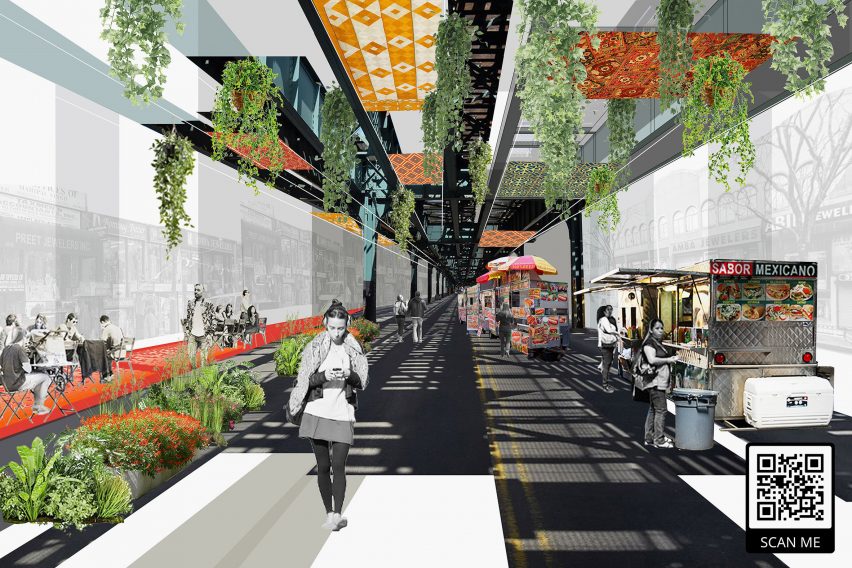
Migration X: Submission 101 by Ismael Cajamarca and Sofiia Alaeva
"Referring to migration as an illegal 'invasion' of immigrants is an example of the recent escalation of tension and persecution along the border between Mexico and the United States.
"Against this backdrop, this project probes architecture to investigate opportunities for affecting large cultural transitions at different scales. Focusing on the circulation of people across the globe, this proposal integrates and assists migrants living in New York City.
"Utilising social media analytically as a tool to promote local migrants' unique cultural contributions, the project focuses on three neighbourhoods and proposes design solutions for improving and invigorating lesser-known yet vibrant areas of NYC."
Students: Ismael Cajamarca and Sofiia Alaeva
Course: Bachelor of Architecture Advanced Studio – Migration X
Tutor: Martin Stigsgaard
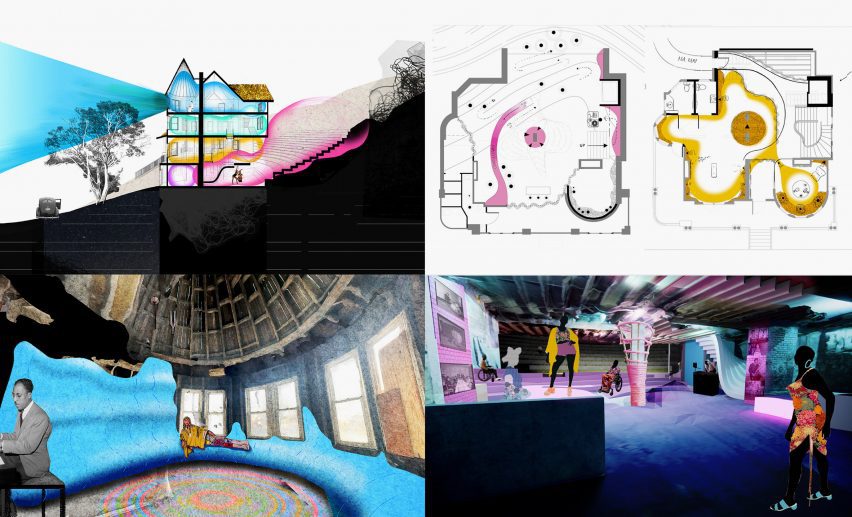
Houses of Resonance: The Pittsburgh National Negro Opera House by Harry Tietelman and Alexandra Almaguer
"House of Resonance re-imagines the National Opera House as an instrument that resonates out from and into the landscape.
"The concept includes developing a new aesthetic language unmasking and preserving the layered history within the walls.
"Beyond restoring the ornate Victorian exterior, the design seeks to transform the interior space into a resonating chamber that creates community and amplifies Black performance."
Students: Harry Tietelman and Alexandra Almaguer
Course: Master of Architecture Advanced Studio – Marronage
Tutor: Jerome Haferd
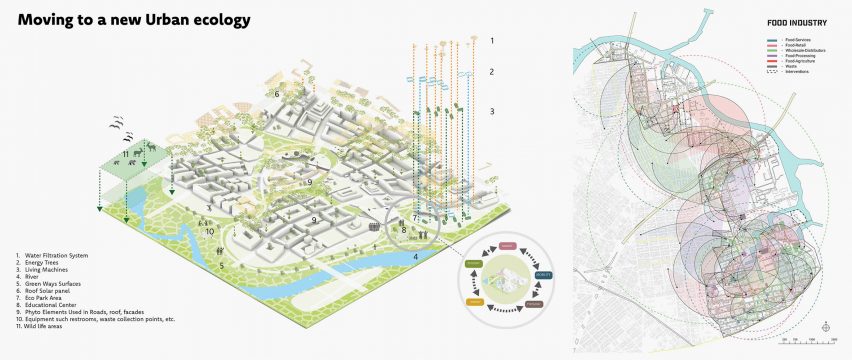
Densifying Manufacturing, Evolving Urban Systems by Fernando Gonzales, Michael Kirschman, Suzanne Kerr, Angie Montenegro, Kunal Veerabhadraswamy, Tanner Barr, Samantha Gifford, Susann Mejia Prior, Pauroma Tann and Christian Calle
"This project reimagines urban manufacturing as part of New York City's legacy of urban industry.
"New initiatives have emerged to support urban manufacturing and create incentives for industrial expansion, since these vital activities advance the city's environmental, socio-economic and sustainable objectives.
"The map proposes to densify urban industrial sites in relation to sites proposed for development by the city's Department of Design and Construction and the Department of Sanitation.
"The perspectival view integrates ecological systems based in participatory practices as the foundation for addressing urban manufacturing."
Students: Fernando Gonzales, Michael Kirschman, Suzanne Kerr, Angie Montenegro, Kunal Veerabhadraswamy, Tanner Barr, Samantha Gifford, Susann Mejia Prior, Pauroma Tann and Christian Calle
Course: Graduate Urban Design Program Advanced Studio – Crafting New Public Imaginaries
Tutors: Julio Salcedo, Marcus Wilford and Neil Katz
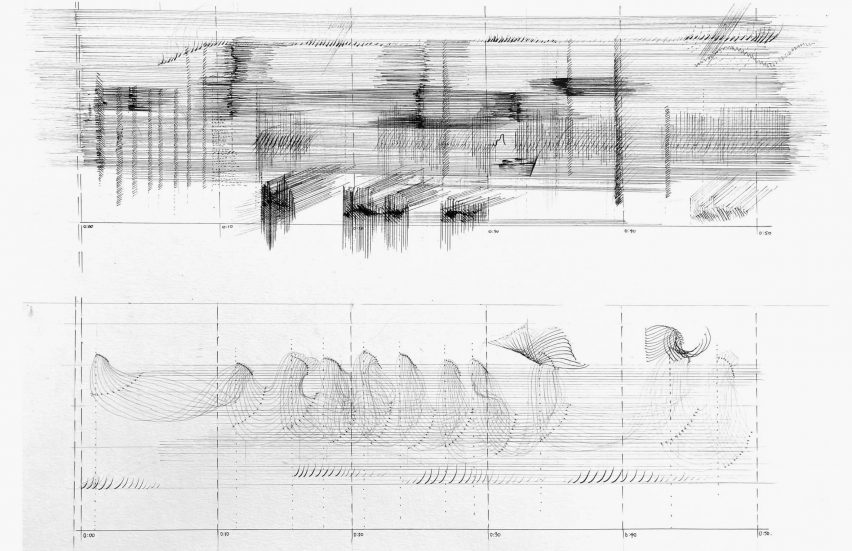
Sound-to-Form: Crafting New York's Future Dwellings by Mayu Uchiyama
"This project is an exploration of construction through site interpretation, where analysis becomes a fundamental part of design, where the description of qualities requires the invention of ways of drawing.
"This reciprocal movement between drawing and construction expands analysis, creating form works for future dwellings, large and small, in New York City.
"In this drawing, the analysis of a small Harlem row house site combines musical and architectural drawing techniques, exploring intricate details like sirens, trees, stoop greetings and garden scenes.
"The interplay of bundled and scattered lines shapes the blueprint for future dwellings."
Student: Mayu Uchiyama
Course: Master of Architecture Advanced Studio – Form Work
Tutors: Jeremy Edmiston and Kaitlin Faherty
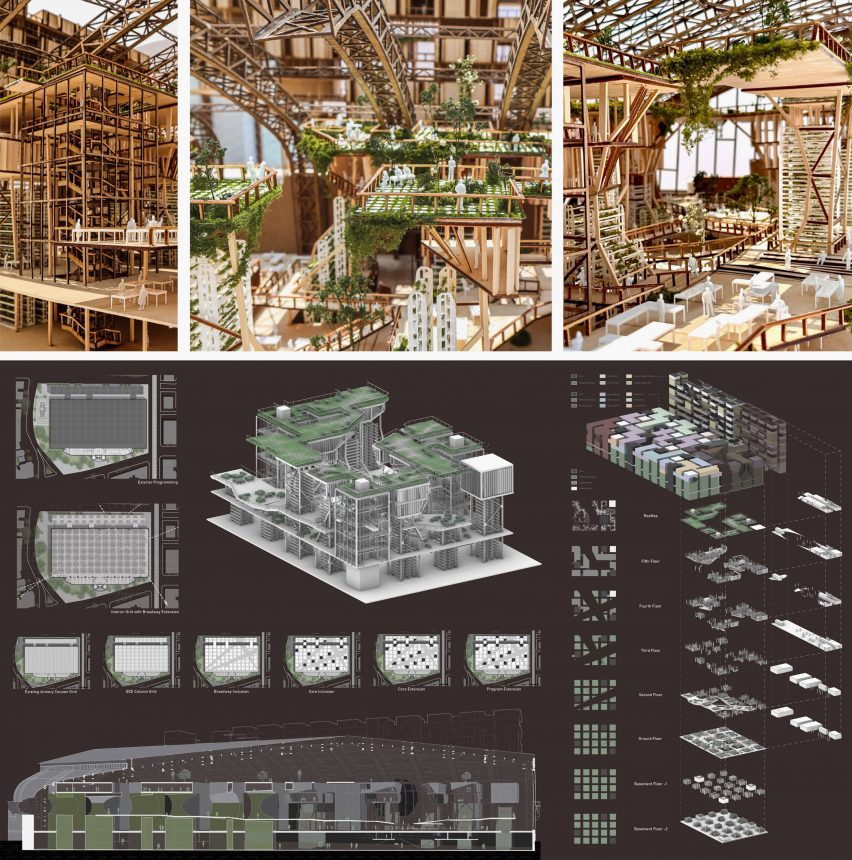
Bronx Collective Ecology by Shiva Abbaszadeh, Kingsley Chong and Wyatt Scott Kuebler
"This proposal, entitled the Bronx Collective Ecology, is an adaptive reuse project and the winning entry in the AIA Bronx Kingsbridge Armory Competition.
"It tackles social, economic and environmental challenges faced by the Bronx community through sustainable agricultural practices and modular design.
"Implementing vertical farming alongside ecological programming, this project transforms the Kingsbridge Armory into a nurturing space, housing a dynamic marketplace, a rooftop garden, poultry farming, maker spaces and recreational spaces for the community to inhabit.
"By reimagining this expansive site through modular organisation, this project fosters productive spaces as well as individual experiences in the community."
Students: Shiva Abbaszadeh, Kingsley Chong and Wyatt Scott Kuebler
Course: Bachelor of Architecture Advanced Studio – Vertical Farming at the Kingsbridge Armory
Tutors: Fabian Llonch
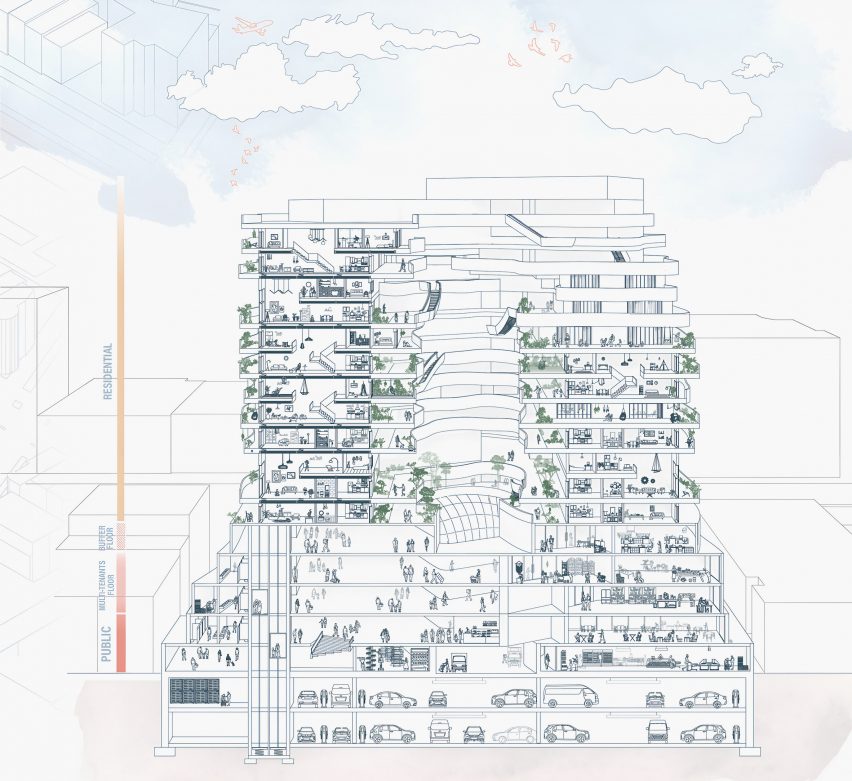
The Nexus by Katerina Kwong, Tianyu Chen and Kang Pei Sun
"For most of the 20th century, public policy prohibited mixing industrial workspaces with housing in most places.
"This project explores how climate solutions can provide a new perspective on defining urban mixed-use, co-locating spaces for green jobs with healthy low-carbon residential units in Crown Heights, Brooklyn.
"The project aims to help achieve the city's climate goals and explore new modes of living and working in a post-carbon city."
Students: Katerina Kwong, Tianyu Chen and Kang Pei Sun
Course: Bachelor of Architecture Advanced Studio: Drawdown – Carbon Neutral Live/Work in Brooklyn
Tutor: Kaja Kühl
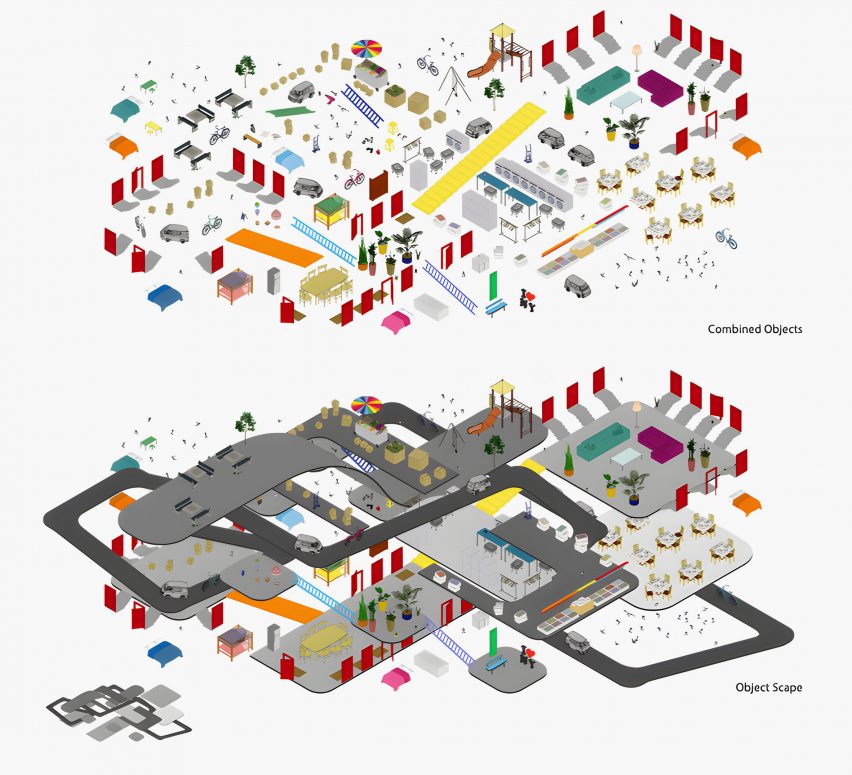
Object-ing Routines by Xiao Lin Wang
"Manhattan's Chinatown is celebrated for its prosperous cultural history and perceptual activities.
"Nevertheless, such visual qualities would not be possible without the overflowing makeup of objects comprising the public sidewalks and private spaces. Thus, objects enable an imaginary built environment to define routines and act as an urban landscape to preserve Chinatown's eccentric characteristics.
"Particular objects define the program of the space and therefore invite interactions specific to individuals' routines."
Student: Xiao Lin Wang
Course: Bachelor of Architecture Advanced Studio – Alternate Futures
Tutor: Lane Rick
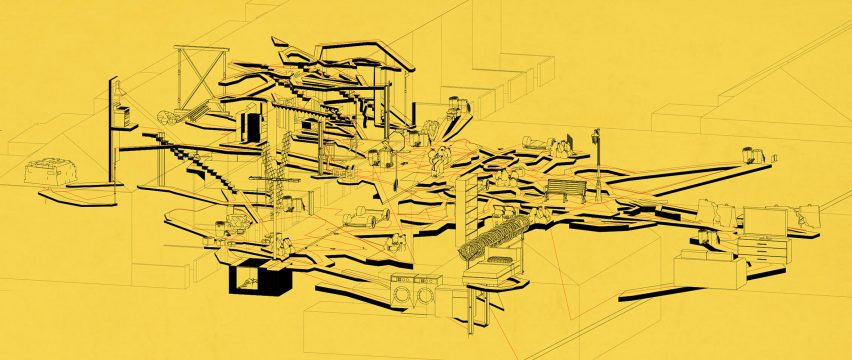
Commensal Cartography by Mosammet Chowdhury
"This project explores urban commensalism, meaning an unencumbered relationship between species. The Covid pandemic has amplified the ways in which humans are intrinsically entangled with non-human species.
"This proposal speculates on the elusive spaces of interspecies cohabitation of humans and rats in New York City. Benefiting from the social shifts of the pandemic, rats have multiplied exponentially.
"It redefines human space in relation to the expanding geographies of rats to understand how architecture indirectly promotes interspecies relationships. Through the invention of a diagrammatic language codifying these unexpected adjacencies and overlaps, the project visualises spaces of mutual encounter."
Student: Mosammet Chowdhury
Course: Bachelor of Architecture Advanced Studio – Independent Projects
Tutor: Brad Horn
Partnership content
This school show is a partnership between Dezeen and City College of New York. Find out more about Dezeen partnership content here.